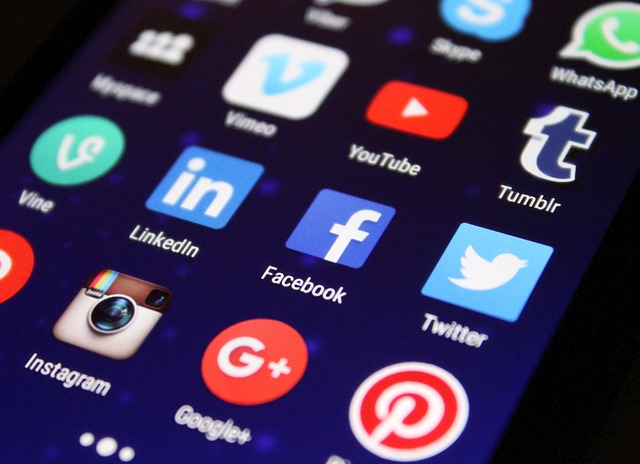You’re probably already aware that maintaining a social media presence is absolutely essential for any type of business to gain brand exposure and engaging with your consumer audience. But have you been keeping up to date with the social media trends that are set to dominate in 2016?
This year is all about fresh and up-to-the minute content through visual forms of communication, such as video and emojis. Users are also getting more social media-savvy and expect to be able to do everything they need in one app. “Tell me more!” you exclaim excitedly. Here are 5 social media trends that can’t be ignored when considering your social media strategy for 2016.
Explore our collection of award-winning planners and journals that encourage leadership, goal-kicking, passion and motivation, with elegant designs that can be personalised.
1. Real-time engagement rules
Towards the end of 2015 it became very clear that users are hungry for real-time video content. Live streaming app Periscope’s rapid rise in popularity since its official launch in March 2015 is a perfect example of the demand for live content. Once logged in, users are able to post live, unedited video segments that are viewed and commented on by their followers. In a similar fashion, Snapchat and Twitter Moments allows users to post live updates to their followers at the tap of their fingertips.
Give your audience a deeper look into your brand
Businesses who are taking advantage of these social platforms are quickly seeing results. By posting live video streams, a company is showing a more authentic side to its consumers, which in return builds trust and loyalty. People love the idea of getting live, behind-the-scenes peeks at what goes on with a company. For instance, retail chain Target used Periscope to provide a behind-the-scenes peek into their new Lilly Pulitzer line which resulted in such huge demand that 90% of the collection sold out within days. Behind the scenes, interviews and product announcements are just a few ways that Periscope and other live streaming apps can benefit a business.
2. Data-driven marketing will increase its dominance
It’s no secret social media helps you figure out who your audience is and how you can tailor your content to promote engagement and encourage conversions. Marketers haven’t previously had access to so much information about consumer preferences before and are quickly trying to cash in on this benefit.
Benefits of breaking down your data
Social media analytics can be used to determine when consumers are going through significant lifestyle changes, such as getting married, having a baby or buying a house, businesses. This is a time when consumers are more willing to change their spending habits and a sweet spot for gaining their loyalty. Plus, these consumers are also more likely to be advocates for your brand.
Want to live a life that makes you excited? Our LH Planners use our Dream | Define | Do framework, based on proven mindset and productivity research, so we know it will help you achieve what you put your mind to!
Coca Cola used Twitter’s Tailored Audience function to create personalised tweets that used consumers’ first names for their Share-a-Coke campaign in 2015, and increased sales by 7% in Australia and 3% in the US. These results strongly suggest that when marketing platforms are micro-targeted by audience segments, there is a noticeable increase in brand exposure and engagement.
3. Major leaps and bounds with in-app functionality
Long gone are the days when a user has to jump from one app to another to achieve what they need to do. Social media platforms and messaging apps are providing everything you need within one app for a seamless and time-saving experience. A perfect example of this is the messaging app WeChat, which currently has 549 million active users worldwide and contributes $1.76bn in lifestyle spending in China. Aside from allowing users to send messages to their contact list, WeChat gives users the ability to:
- Express emotion with emojis and stickers
- Send money and pay bills
- Purchase products
- Get one-on-one customer help
- Make a call
- Send voice messages
- Host Group Chats
- Post images, videos and status updates
Other messaging apps, like Whatsapp and Viber have developed similar functions although they’re not yet quite as developed as WeChat.
Jumping on the bandwagon
Due to its huge popularity, particularly in China, businesses worldwide are quickly realising the need to corner this lucrative market by setting up their brand on WeChat. By setting up a WeChat platform, companies can give users a range of functionalities, such as purchase products, access customer service and view regular updates and announcements.
Japanese clothing brand Uniqlo increased sales by 30% in China and doubled their WeChat followers from 400,000 to 1 million in just six months with the launch of their Style Your Life campaign in 2015. Consumers were able to try on outfits and use their mobile phones or in-store monitors to take photos and load them onto WeChat to superimpose them against different backgrounds (snow, tropical island, etc).
4. Gifs, videos and emojis.. oh my!
Visual communication has become driving forces of engagement, with micro-videos, gifs and emojis becoming a common form of expression, especially amongst young consumers. Facebook, Twitter and Google are all vying for more video and integrated gif content to deliver the demand and retain users.
Press record to encourage engagement
Facebook is set to dominate the video scene with the introduction of 360 video, a camera system that simultaneously records 360 degrees of a scene, allowing viewers to pan and rotate to watch the video from different angles. For instance, ABC NEWS used 360 on Facebook to allow their viewers to take a look into Carnival in Rio de Janeiro, Brazil. Utilising new video apps to gain brand exposure and increase engagement will show that your business is focused on creating buzz and staying
Making sense of emojis
Emojis are another trend that marketers are using to their advantage. Think what you want about Kim Kardashian, but her release of the Kimoji app generated 9000 downloads per second which generated $1 million revenue per minute! The app was so in demand the servers crashed due to its inability to keep up with demand.
At first glance, they might just seem like a fun way to express yourself but if you take a closer look you can gather important information about your consumer base. “But how?” you ask (insert frustrated emoji here), “they’re just cute little images people use when messaging their friends.” Consider the following questions:
- Do you know what emojis are associated with your business and what they mean?
- Do you know the context of such conversations?
- Can you convert that information into actionable insight?
By analysing the actual meaning and logic behind the use of emoji characters, you should be able to discover valuable information about your target audience.
5. Buy buttons will become the norm
The ability to purchase products in social media apps has already been introduced by Facebook and Pinterest, who’ve introduced ‘buy’ buttons for advertisers and users. Facebook are currently testing their ‘call-to-action’ button across small and medium-sized business in the US with the hopes of rolling it out worldwide this year. Pinterest ‘buy’ buttons are displayed on pins, which allows the user to click and purchase without having to leave the app.
A new way to reach your target audience
By the end of 2016 most major social media brand will feature a ‘buy’ button in some kind of capacity as an element of their advertising campaign. This will allow businesses access to a whole new realm of advertising, giving them the ability to push specific products targeted towards segmented audiences. For example, a baby products company is able to target women who are due to have a baby or recently given birth, to advertise newborn products such as clothing, nappies and nursery accessories which can be purchased at a click of a button.
So there you have it… another exciting year in the always-changing world of social media. Are there any other social media trends that you think are set to take over in 2016? I’d love to hear your thoughts.
Kristine Stone is a copywriter at Sydney-based design agency Orion Creative. She’s obsessed with social media, blogging and keeping up with the latest digital marketing trends. A self-confessed word nerd, Kristine has experience writing about women’s lifestyle, bridal, technology, interior design and a wide range of other industries.



